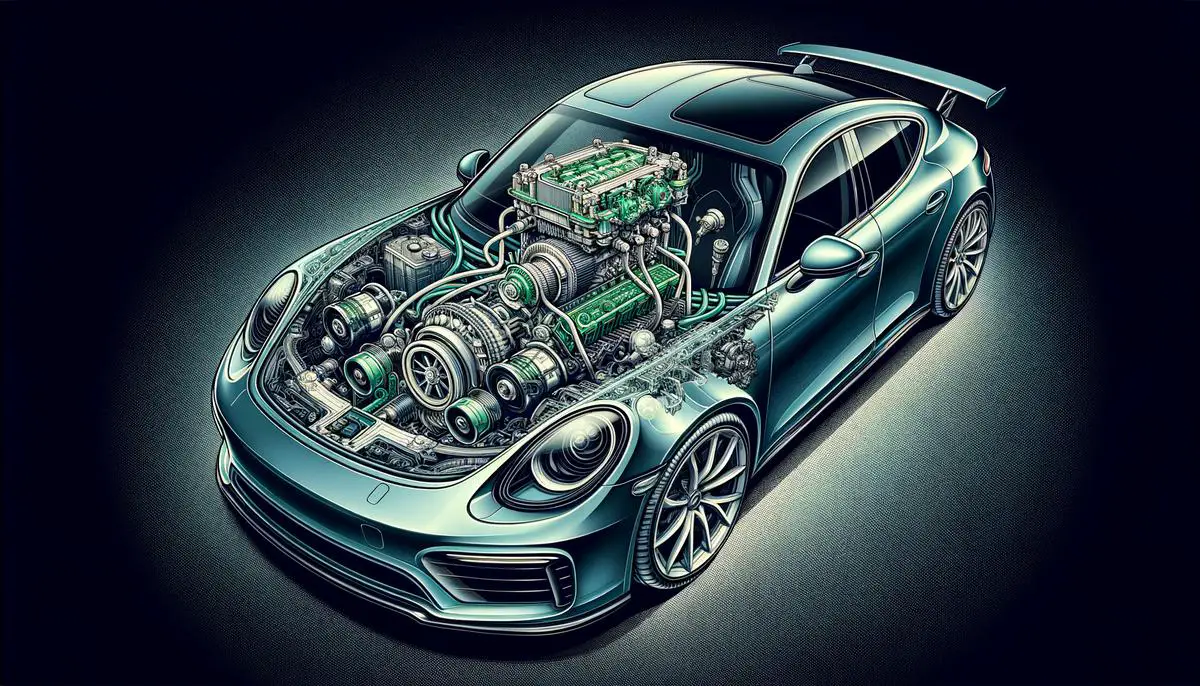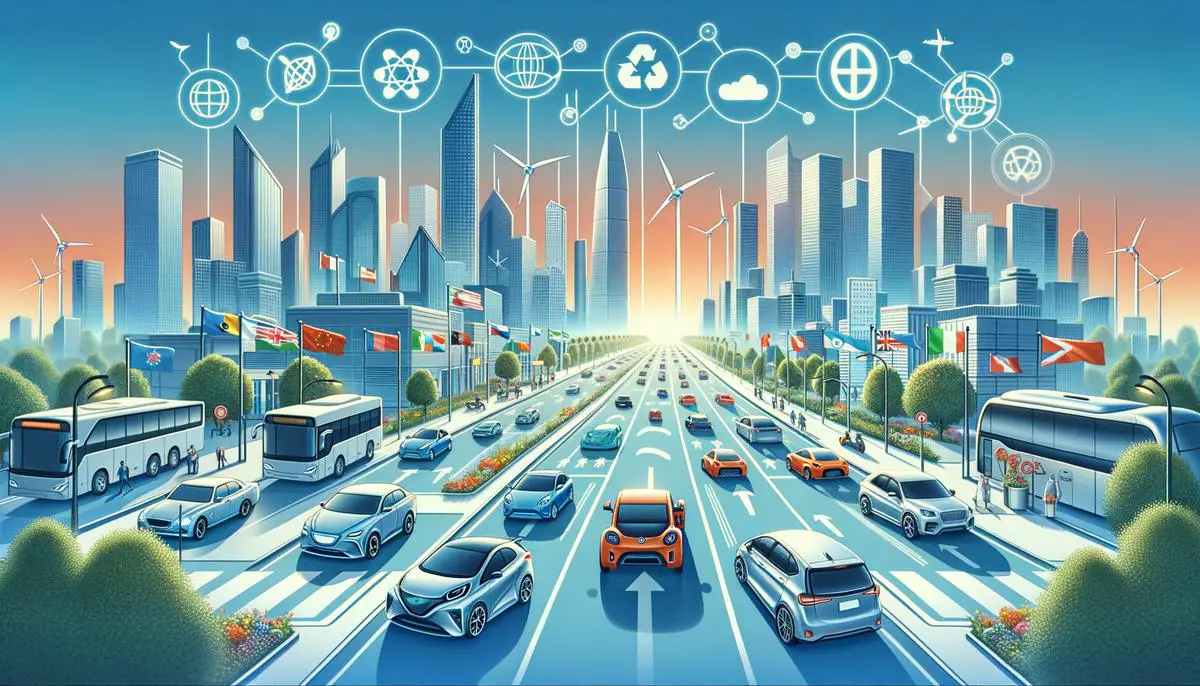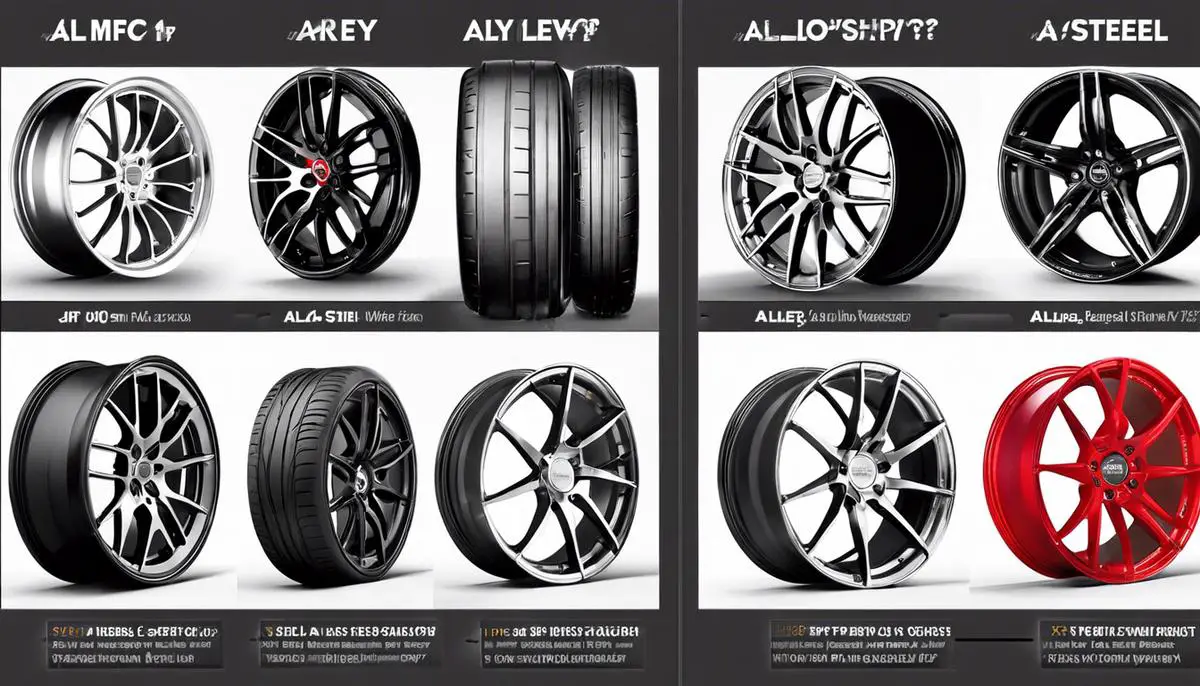Contents
Historical Evolution of Emission Standards
Emission standards have played a significant role in shaping the automotive industry's development. These regulations were initially focused on reducing visible pollutants and smog. Over time, the primary aim has extended to curtailing greenhouse gases as climate change concerns have grown.
In the United States, the Clean Air Act of 1963 and its subsequent amendments introduced the requirement for catalytic converters in cars, effectively reducing harmful exhaust gases. This legislation marked a significant shift towards environmental consciousness in the automotive industry.
Europe followed suit with the implementation of the Euro 1 standard in 1992, setting limits on carbon monoxide and particulate matter for new cars. Subsequent updates, such as Euro 2 in 1996 and Euro 3 in 2000, further tightened emissions caps and regulated more pollutants.
The rise in emission standards became a global phenomenon, with countries like Japan and India developing their own versions of emission regulations. This movement pushed manufacturers to not only fine-tune engines to reduce emissions but also to innovate consistently, bringing concepts like fuel efficiency and hybrid vehicles into the mainstream.
The tightening of regulations sometimes raised concerns about reduced performance, but advancements in turbocharging and fuel injection allowed eco-friendlier engines to match or surpass their predecessors. The 21st century saw the rise of electric vehicles (EVs), with emission regulations providing a strong impetus for these innovations.
As developing economies ramp up their standards and Europe and the U.S. maintain stringent emission scrutiny, the global automotive industry continues to evolve. The pursuit of cleaner automobiles reflects a worldwide effort to reduce automotive pollutants through innovative engineering solutions, steering the industry towards a more sustainable future.
Comparative Analysis of Global Emission Standards
The proposed Australian emission standards, set for 2025, aim to align with leading global protocols in the US, EU, and other advanced economies. Each region's approach to emissions combines aggressive requirements, technological endorsement, and varying deadlines, impacting both car performance and environmental footprints.
In the US, EPA guidelines are becoming stricter, focusing on CO2 reductions and promoting electric vehicles. By 2032, EVs could make up approximately 67% of new light-duty vehicle sales, driven by increasingly stringent tailpipe emissions standards.1 The US approach emphasizes performance-based outcomes, allowing manufacturers flexibility in achieving set limits.
Europe's approach is more direct, with standards like Euro 6 dictating specific emissions quantities for various pollutants across different vehicle sectors. These clear-cut figures have led to the adoption of diesel particulate filters and selective catalytic reduction technologies. European standards impact performance characteristics by fostering cleaner vehicles and substantial investments in electric and hybrid technology.
Australia's proposed framework focuses on curbing CO2 intensities in a staged, delayed approach compared to its global counterparts. The tiered options offer flexibilities, with the most aggressive choice aiming to slash car CO2 emissions by 77% by decade's end.2 This segmented approach allows for an adjustable phase-in but risks lagging behind the expedited carbon reductions seen elsewhere.
Japan imposes even stricter measures, with a distinct timeline towards banning the sale of internal combustion engines entirely. This radical legislative stance promotes electric and hybrid vehicles, aligning with nationwide climate targets. While this might limit traditional auto-engine upgrades, it vastly expands electric propulsion technologies.
These varying approaches present different incentives and penalties that drive manufacturers to make engineering choices that respect localized policy climates. The resulting technological shifts lead to an international automotive market where baseline performance metrics include efficiency, emissions quality, and technological integration, alongside traditional measures like horsepower and speed.
Australian standards, although later in their adoption, can potentially leapfrog into more modern practices currently prevalent elsewhere. By incorporating global tendencies and benchmarks set by other leading economies, the evolution of car performance points towards a less polluting and more energy-efficient future, shaped by enhanced emissions standards and a more environmentally conscious consumer base.
Impact of Emission Standards on Car Performance
Tightening emission standards significantly influence various performance metrics of vehicles, prompting manufacturers to innovate and adapt. This evolution often focuses on three critical vehicle characteristics:
- Fuel efficiency
- Engine power
- Overall vehicle reliability
Improving fuel efficiency is a key concern for automakers. Emission regulations inherently push for reductions in fuel consumption to mitigate pollution levels, leading to advancements in engine technologies such as turbocharging and hybrid systems. These innovations align with environmental goals and offer consumers lower operating costs.
Contrary to the misconception that increasing fuel efficiency might compromise engine power, technologies like direct fuel injection and advanced engine management systems have allowed vehicles to maintain or even increase horsepower while adhering to stringent emission norms. Modern vehicles can achieve a balance between power and efficiency, with downsized turbocharged engines delivering high power outputs.
Reliability is another aspect influenced by tighter emission standards. Initially, concerns arose about potential decreases in vehicle reliability due to new technologies. However, as these technologies have matured and been refined, they have enhanced dependability. Continuous improvements in materials and engineering have resulted in emission control systems that last longer and better withstand varied operating conditions.
The enforcement of rigorous standards has spurred research and development of alternative fuel vehicles, particularly electric vehicles (EVs). EVs significantly reduce emissions while offering high energy efficiency compared to traditional internal combustion engines. Advancements in battery technologies have improved both the range and longevity of EVs, addressing historical barriers to consumer adoption.
As emission standards continue to tighten, the automotive industry's response preserves and often enhances vehicle performance through innovative engineering solutions. These developments ensure that future vehicles will be cleaner, more environmentally friendly, and provide the performance, efficiency, and reliability demanded by consumers. This trend redefines the benchmarks of automotive excellence, steering the industry towards a future where sustainability coexists with high-performance standards.

Future Trends in Emission Regulations
Future trends in emission regulations are set to further drive technological innovation and shape vehicle design and performance. As global environmental policies become more stringent, the regulatory landscape is expected to deepen its commitment to lowering emissions and promoting sustainable transport options.
One prominent trend is the increased adoption and integration of electrification in automotive design. As countries aim for ambitious carbon neutrality goals, emission standards are expected to pave the way for electric vehicles (EVs) and encourage manufacturers to produce more zero-emissions vehicles. This includes expanding EV infrastructure, such as charging stations and fast-charging technology, to facilitate the gradual phase-out of internal combustion engines.
Another expected trajectory is the improvement and commercial viability of hydrogen fuel cell technologies. These standards offer the dual advantage of emitting only water vapor and providing longer range and quicker refueling times compared to electric batteries. Anticipated advancements in this technology may lead to its inclusion within future emission guidelines, reflecting a broader trend towards diversity in clean energy sources.
In response to regulatory and technological advancements, the development of 'smart' and connected vehicles may intensify. These vehicles could potentially interface with environmental monitoring networks, enabling them to operate at optimal energy efficiency and within emission compliance more proactively. This interaction could include dynamic adjustments to engine output or driving modes based on real-time air quality and environmental data.
Emission regulations are likely to continue fostering advancements in areas such as synthetic fuels and advanced biofuels, providing traditional engines an environmentally friendly lifeline while the challenges of full electrification are addressed. This could meet some resistance due to the ongoing reliance on combustibles, but proponents argue that it presents a pragmatic path forward amid the transition.
Simultaneously, efforts to harmonize global emission policies may increase as international cooperation becomes even more essential in combating climate change. Uniform standards could simplify manufacturer compliance, drive down costs, and accelerate global market adjustments to these evolving requirements. Enforcement policies might correspondingly ramp up, backed by stronger international treaties or agreements encouraging adherence to committed emission targets.
In terms of performance, future vehicles are expected to be significantly cleaner and more sustainable while enhancing traditional metrics such as speed and handling. The automotive industry is witnessing an era that aligns power, innovation, sustainability, and environmental responsibility. As new standards emphasizing holistic environmental impacts come into effect, car performance will continue to synergize with cutting-edge technological utilizations, redefining not just what vehicles can achieve but also how societies view transportation in terms of its broader ecological impact.

- US Environmental Protection Agency. EPA finalizes greenhouse gas standards for passenger vehicles, paving way for a zero-emissions future. News Release. December 20, 2021.
- Department of Infrastructure, Transport, Regional Development and Communications. Future Fuels and Vehicles Strategy. Australian Government. February 9, 2022.



